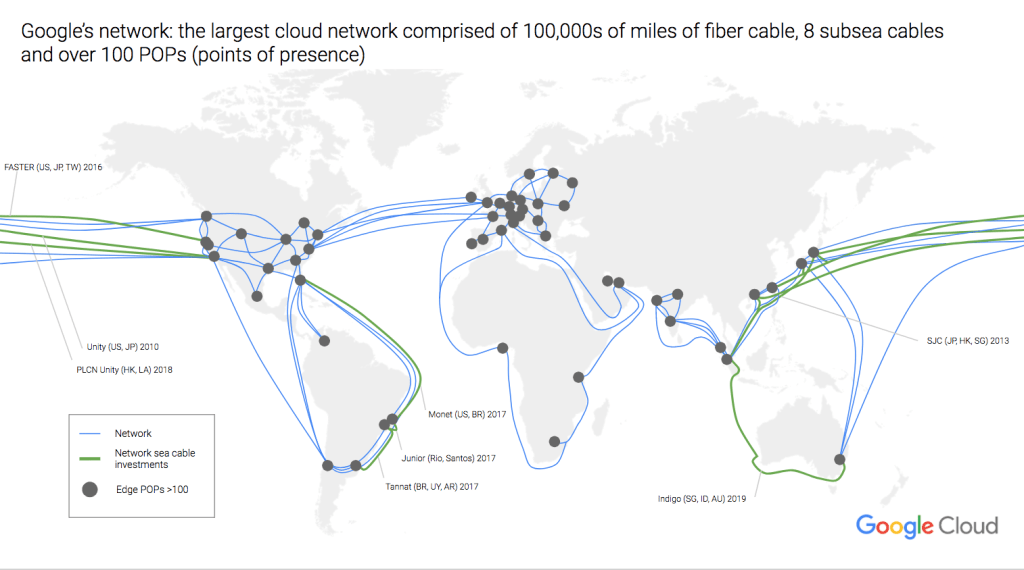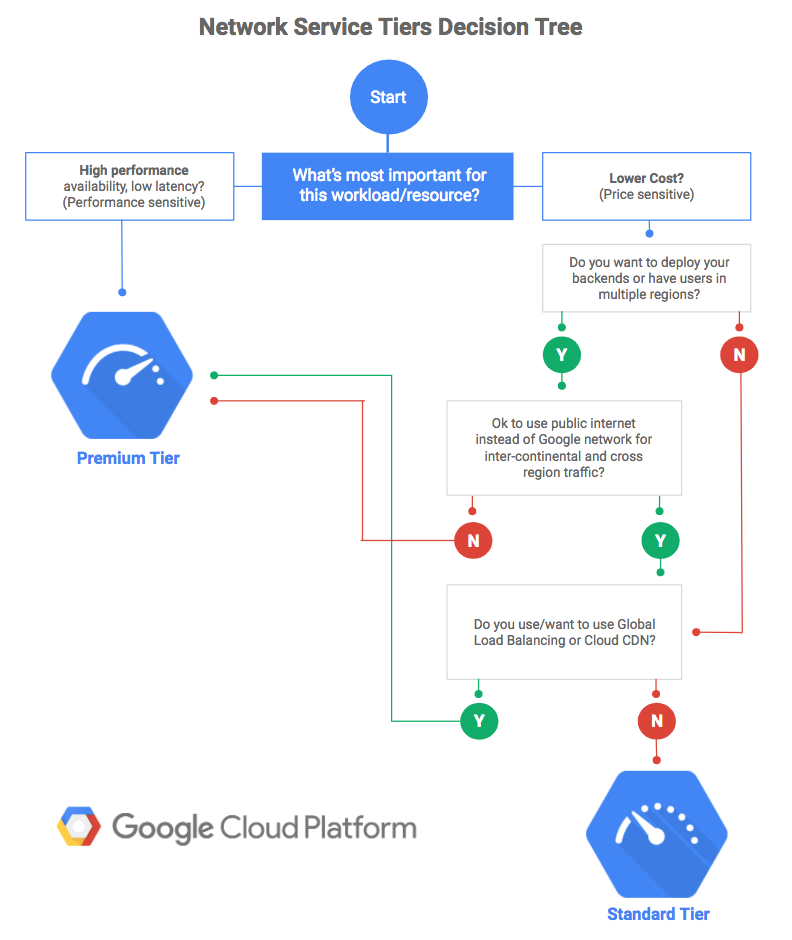Google’s Cloud Platform gets a cheaper, lower-performance networking tier

Google is giving its Cloud Platform users a new, cheaper networking option. Developers can now choose between a premium tier, which routes traffic to their users over Google’s own high-speed networks for as long as possible to minimize hops and distance, and a standard tier, which routes traffic over the public internet, with all the potential slowdowns and extra hops this entails.
“Over the last 18 years, we built the world’s largest network, which by some accounts delivers 25-30% of all Internet traffic” said Urs Hölzle, Google’s SVP for Technical Infrastructure, in today’s announcement. “You enjoy the same infrastructure with Premium Tier. But for some use cases, you may prefer a cheaper, lower-performance alternative. With Network Service Tiers, you can choose the network that’s right for you, for each application.”
Pricing for the standard tier is 24-33 percent lower than for the premium tier in North America and Europe. Google uses different pricing models for these two tiers, though. Prices for premium traffic is based on the traffic’s source and destination, so you pay for the distance your traffic travels over Google’s network, while the standard tier’s prices are only based on where the source is.
Currently, all Google Cloud users are using what’s now branded as the Premium Tier. This traffic stays on Google’s own network for as long as possible (that’s cold-potato routing for those of you who are into networking) and is then handed off to the wider internet at one of Google’s over 100 global points of presence on its edge network. This minimizes latency and reduces the change of packet loss as traffic moves across Google’s own cables. The same goes for traffic from a user’s device to a developer’s application. Traffic is quickly handed over to Google’s edge network, which then moves it to the company’s data centers.
With the new standard tier, Google hands your traffic over to the public internet instead of routing it through its own network. There, it’ll hop from network to network and ISP to ISP, which is obviously slower than using Google’s own network. As Google notes, that’s similar to what other public cloud providers, who don’t have their own extensive networks, do as well.
Google worked with Cedexis to quantify and publicly monitor the performance of these two networking tiers. Unsurprisingly, throughput on the standard tier is significantly slower and latency is higher (though the difference in throughput is more pronounced than the difference in latency).
One disadvantage of using the standard tier is that you can’t use Google’s global load balancer and Cloud CDN. Instead, you have to use regional load balancing.
If you’re trying to decide which tier to choose for your own application, here is Google’s own handy flowchart:


